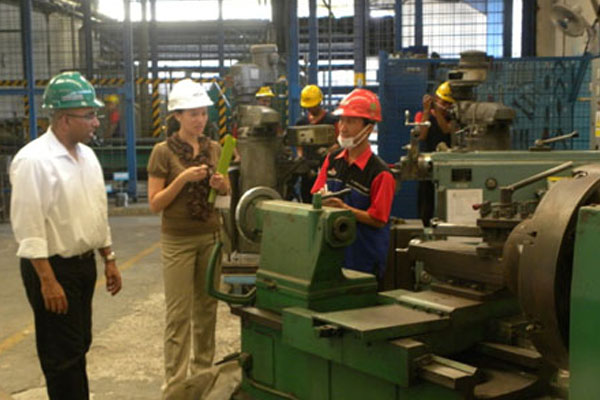
Go and See
Toyota Principle #12: Go and see for yourself to thoroughly understand the situation (Genchi Genbutsu).
When Toyota published “The Toyota Way 2001,” it was a deviation from the earlier “Toyota Production System.” The TPS concentrated on the mechanics of how Toyota had become the number 1 automobile producer in the world. By contrast, the “Toyota Way 2001” assigns more emphasis to the cultural and philosophical elements that had gotten them there.
In the 2001 document, Toyota named the two pillars in its “Toyota Way:”
- Continuous Improvement
- Respect for People.
Toyota makes it clear that these pillars are critical to supporting the remainder of the Toyota Way.
Toyota Principles 9, 10, 11 & 12 form much of the basis for Toyota’s respect for people. This post examines the importance of Principle #12: Genchi Genbutsu – Go and See (for yourself).
We live in a virtual era.
By that I mean we have the ability to view almost anything, often live, right from our computer, tablet or smart phone. It’s tempting to inform ourselves using only this technology. But do we see the whole picture? Do we get an accurate assessment of what’s really happening?
If we’re honest with ourselves, we know the answer is “No,” but we remind ourselves that, in the interest of time, we often have to resort to it.
Sadly, virtual knowledge frequently leads us to draw the wrong conclusions.
Why?
First, because both the camera and written documents convey the author’s bias. We see and hear what they want us to, what they think is important, not what actually is happening.
Second, even with a totally neutral report, we see only the immediate focus, not the ancillary issues only visible in person. This is why Taiichi Ohno made regular use of the “Ohno Circle.” He would draw a circle on the floor and have an employee (usually an engineer) stand in it and observe what was going on – sometimes for hours. This gave the engineer a more balanced view of what was going on.
Virtual experiences isolate us from real people.
Equally pernicious is the fact that virtual experiences isolate us from real people. Just as Gemba is real place, there are real people in that place. A leader’s actual visit can be witnessed by their employees; a virtual visit cannot.
When you go and see for yourself, those in Gemba can draw inspiration from the fact that they and their problems mattered enough for you to come and visit.
Leaders routinely fail to understand the importance their mere presence has on morale.
Moreover, if leaders engage their employees in discussion about the things that led to their visit, they show their employees respect and convey the fact that the employees’ insights matter.
Discussions with employees need not be one-directional (listening only). It’s also the leader’s opportunity to both coach their employees and convey their own point of view. Done with respect, the leader’s efforts convey caring and concern, both of which will bond them with those in Gemba.
Keep in mind: because of their position, the Leader often has a much broader picture of the business than their employees. They can use Gemba visits as an opportunity to spread a more high-level perspective. Again, this shows respect and deepens the corporate knowledge of the organization.
In short, one needs to carefully protect themselves from drawing conclusions from reports: verbal or written, because they can convey not only the “facts,” but facts as seen from the reporter’s point of view.
A good rule of thumb: if information is worth acting on, it’s worth confirming with a personal visit.

